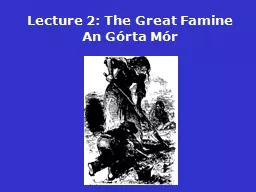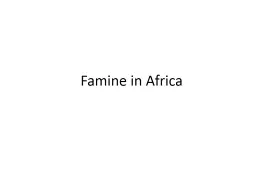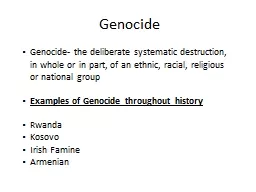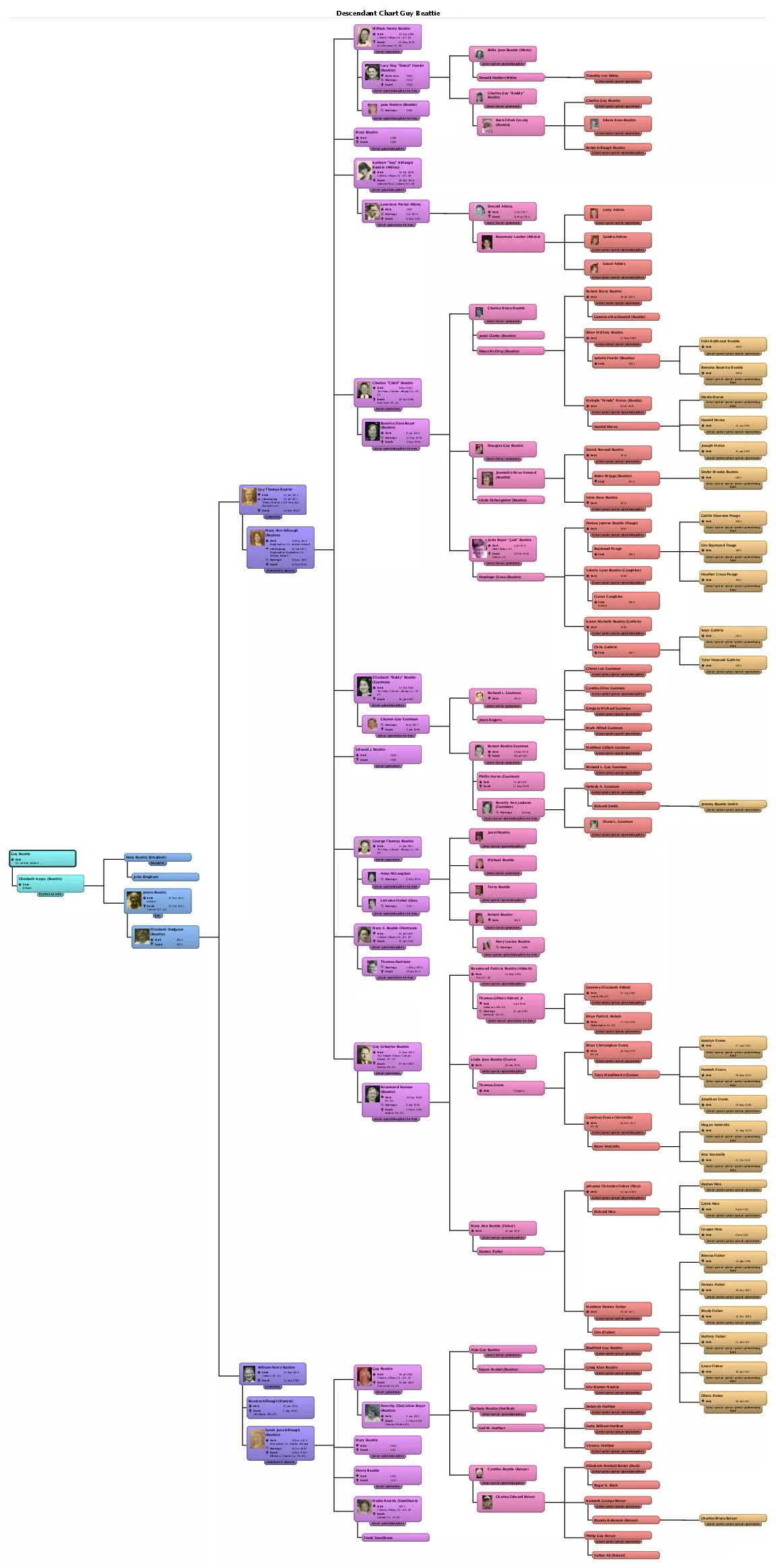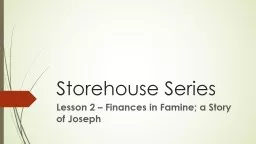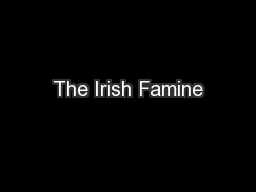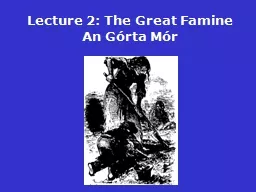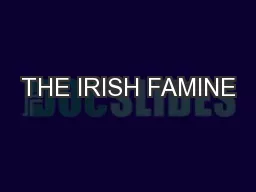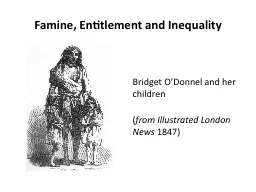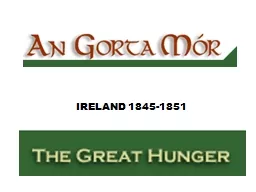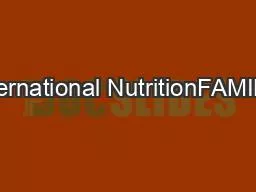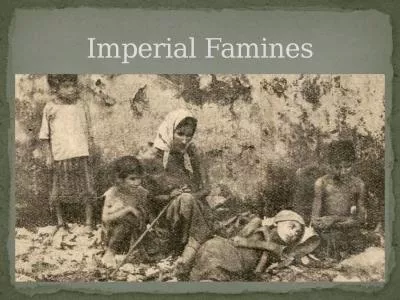PPT-Lecture 2: The Great Famine
Author : yoshiko-marsland | Published Date : 2016-03-20
An Górta Mór T he Great Famine Some key dates 1845 9 September Potato blight first reported in Ireland 910 November British Prime Minister Peel authorises importation
Presentation Embed Code
Download Presentation
Download Presentation The PPT/PDF document "Lecture 2: The Great Famine" is the property of its rightful owner. Permission is granted to download and print the materials on this website for personal, non-commercial use only, and to display it on your personal computer provided you do not modify the materials and that you retain all copyright notices contained in the materials. By downloading content from our website, you accept the terms of this agreement.
Lecture 2: The Great Famine: Transcript
Download Rules Of Document
"Lecture 2: The Great Famine"The content belongs to its owner. You may download and print it for personal use, without modification, and keep all copyright notices. By downloading, you agree to these terms.
Related Documents

